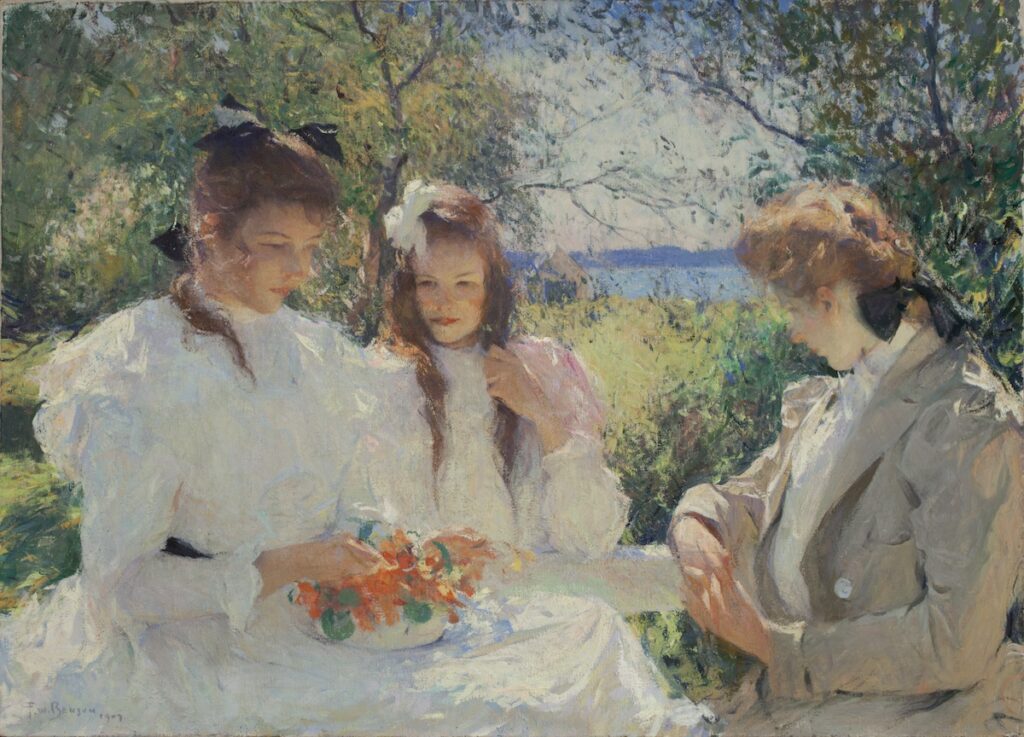When Frank and Ellen Benson first saw the island of North Haven in Maine’s Penobscot Bay they had been met at the village ferry landing by a good friend, Heman Chaplin. Chaplin had quickly bundled his children and the Bensons into his carriage for the ride out to Crabtree Point. When they stopped at the top of a rise overlooking Wooster Farm, the Bensons realized they had found the summer home they had been looking for. “From the moment we saw it,” Frank Benson remembered, “North Haven felt like home.”
There were plenty of open fields for gardens, croquet and games of all sorts. A white house stood next to an old apple orchard. Stands of dark spruce crowned the headlands and the cool Maine breeze rippled through the farmer’s hay fields below. Summer sun bathed the fields and the water beyond with dazzling light.
Putting her hand up to shield her eyes against the brilliant sunlight, Ellen looked to the west. In the distance, across the sparkling waters, the blue Camden Hills shimmered through the August haze.
Looking at his wife silhouetted against the August-blue sky, Benson experienced a sudden realization, “This is it,” he remembered thinking. “This is where I want to paint her.” He turned to his children running across the meadow. “And them.”
Wooster Farm was an old, foursquare house with a large central chimney that had been built around 1795 by James Glover on land once owned by Capt. Eleazer Crabtree. The farm occupied a narrow piece of land with views towards the Camden hills on one side and the waters of the Fox Island Thoroughfare, which separated North Haven from Vinal Haven Island, on the other. Benson could see that the large barn – currently occupied by Mr. Wooster’s cows – would make a perfect studio. The following summer, 1901, they began renting the old farm and 25 acres. A few years later, they bought it.
“Somehere in his studio,” a contempory writer observed, “Frank Benson keeps a jar of sunshine. And he dips his brush in it when he paints his children on North Haven Island.”
It is these paintings that people think of when they recall the work of this beloved American impressionist painter.


